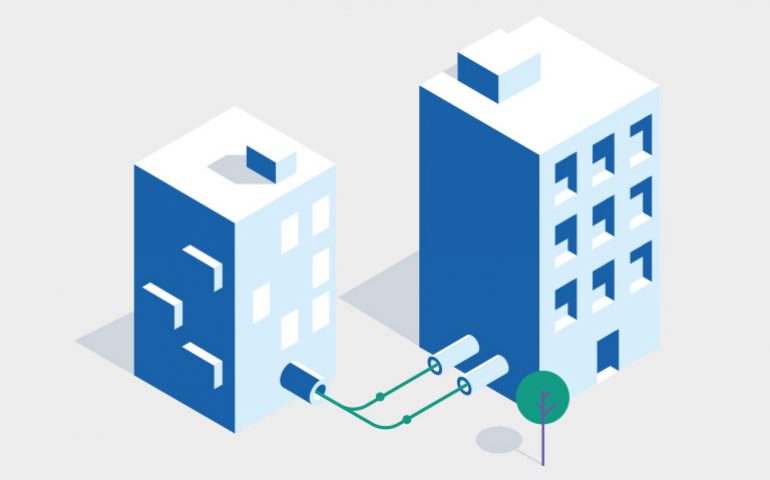

Blog Post
5 mins

A data centre is a specially designed facility where organisations store their IT, systems and data.
You can choose to build and operate your own data centre, rent space within another provider’s data centre, or consume cloud or managed hosting services from a cloud provider’s data centre.
Data centres are often built differently to standard buildings. They are specially designed to house IT systems in a secure environment that meets the needs of IT infrastructure, such as power and cooling capabilities, alongside connectivity and security capabilities.
Data centres usually have the following:
Data centres are complex buildings which have been designed to exacting standards to house IT systems and operations. For example, walls might be built to exact specifications to enable better cooling and airflow.
When discussing data centres, you might hear the term “hot and cold aisles”. This refers to how data centres are arranged. Racks (the frames into which servers, storage and networking hardware are installed) are arranged in rows, usually in hot and cold aisles. Because of the amount of processing power being produced by the servers and storage in a condensed space, the hardware has fans to push out the heat so that it can escape, like on your laptop or PC. This produces a lot of heat if there are lots of server and storage systems in close proximity. To avoid hot air coming from one row of server racks and being pulled into the next row’s fans, data centres are arranged with hot and cold aisles. This enables air-conditioned, cooler air to be distributed around the data centre to cool all of the hardware and components effectively to avoid overheating which can result in systems failing, and pushes hot air away from servers and racks.
Some ‘eco data centres’ are also now being built in very cold locations, such as next to the sea in northern Europe to make use of ‘natural air-conditioning’ from the wind, reducing power and cooling costs.
You might not want to design, build and manage your own data centre. In this scenario, you can use a provider, such as Pulsant, to provide colocation services where your own IT systems are hosted within an enterprise Pulsant data centre. This gives you the benefit of accessing an enterprise-grade data centre with redundant power supplies and cooling, alongside secure facilities, without the high cost of purchasing and building your own data centre. And, colocation facilities are often upgraded regularly which can be a costly commitment if you are managing your own data centre and trying to keep up to date with the latest industry standards, regulations and technology in the data centre sector.
Managed Hosting is where a data centre or cloud provider manages your infrastructure within their data centre. They may be responsible for just the hardware (servers, storage, networking and components) or may have SLAs around supporting your infrastructure and upgrades. This means you don’t have to worry about operating your own data centre and managing the environment in which your IT is located as this is done for you by a specialist provider.
Find out more about Pulsant’s Colocation facilities here: https://www.pulsant.com/services/colocation/ or read up on our data centre services and accreditations here: https://www.pulsant.com/services/infrastructure/datacentres/
published 5 Jun 2018
Pulsant has updated its cookie policy. We use third-party cookies to personalise content, provide social media features, and analyse our traffic to ensure that we give you the best experience on our website. If you continue without changing your settings, we'll assume that you are happy to receive all cookies on the Pulsant website. Want to know more?




